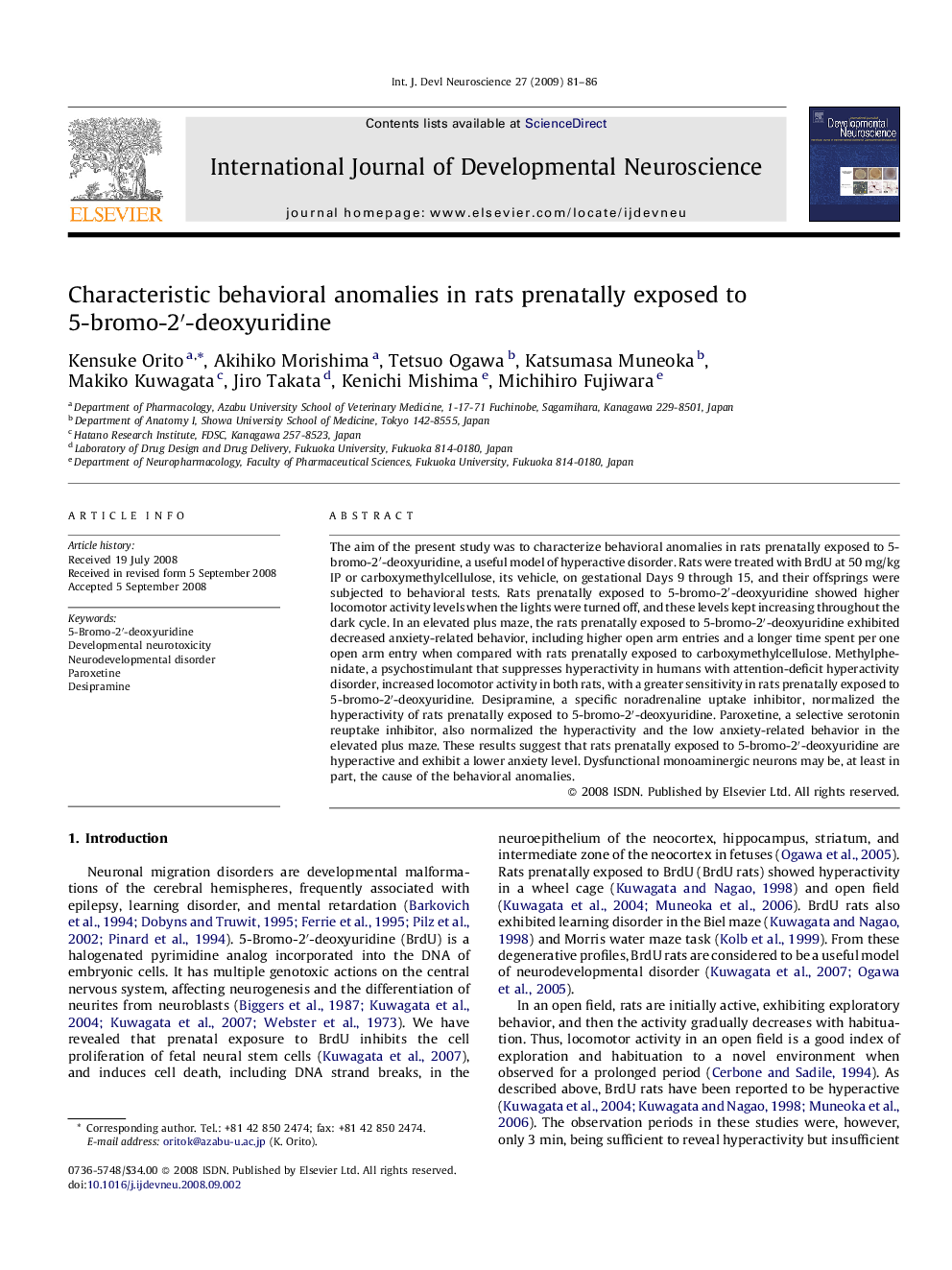| Article ID | Journal | Published Year | Pages | File Type |
|---|---|---|---|---|
| 2787015 | International Journal of Developmental Neuroscience | 2009 | 6 Pages |
The aim of the present study was to characterize behavioral anomalies in rats prenatally exposed to 5-bromo-2′-deoxyuridine, a useful model of hyperactive disorder. Rats were treated with BrdU at 50 mg/kg IP or carboxymethylcellulose, its vehicle, on gestational Days 9 through 15, and their offsprings were subjected to behavioral tests. Rats prenatally exposed to 5-bromo-2′-deoxyuridine showed higher locomotor activity levels when the lights were turned off, and these levels kept increasing throughout the dark cycle. In an elevated plus maze, the rats prenatally exposed to 5-bromo-2′-deoxyuridine exhibited decreased anxiety-related behavior, including higher open arm entries and a longer time spent per one open arm entry when compared with rats prenatally exposed to carboxymethylcellulose. Methylphenidate, a psychostimulant that suppresses hyperactivity in humans with attention-deficit hyperactivity disorder, increased locomotor activity in both rats, with a greater sensitivity in rats prenatally exposed to 5-bromo-2′-deoxyuridine. Desipramine, a specific noradrenaline uptake inhibitor, normalized the hyperactivity of rats prenatally exposed to 5-bromo-2′-deoxyuridine. Paroxetine, a selective serotonin reuptake inhibitor, also normalized the hyperactivity and the low anxiety-related behavior in the elevated plus maze. These results suggest that rats prenatally exposed to 5-bromo-2′-deoxyuridine are hyperactive and exhibit a lower anxiety level. Dysfunctional monoaminergic neurons may be, at least in part, the cause of the behavioral anomalies.
